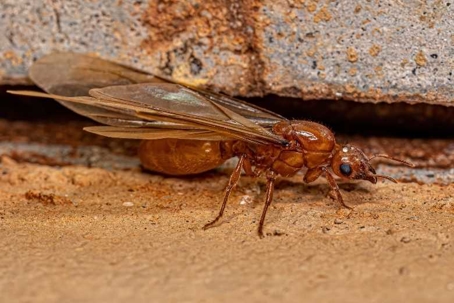What Do Thief Ants Eat?
Thief ants (often Solenopsis molesta) are tiny, light-colored ants that are notorious for their small size and secretive habits. Their diet is quite varied, but they show a strong preference for foods high in protein and fats. Specifically:
Greasy or fatty foods: They are attracted to oils, meats, cheese, and other protein-rich foods. In homes, they often target peanut butter, meats, or greasy crumbs.
Sugars and sweets: Although they prefer protein, they will also forage for sweets like honey, syrup, or sugary residues.
Other insects or insect larvae: Thief ants often invade the nests of other ant species to steal larvae or pupae, which they consume as a protein source.
Household food scraps: In domestic settings, they will scavenge for tiny crumbs of bread, cereal, or other food residues.
Pet food: They can infest dry pet foods, particularly those high in fat or protein.
Thief ants are called “thief” ants because they often nest close to larger ant colonies and steal food or brood. Their small size allows them to access tiny crevices that other ants cannot, so even microscopic food particles can sustain a colony.
Do Thief Ants Eat Insects?
Thief ants are opportunistic predators and scavengers when it comes to other insects. Their small size allows them to exploit resources that larger ants often cannot access. Specifically, they tend to target:
Ant larvae and pupae – True to their name, thief ants often invade the nests of other ant species to steal brood, which provides a rich protein source.
Small soft-bodied insects – They will consume aphids, springtails, mites, or tiny caterpillars if available.
Dead or dying insects – Thief ants scavenge on insects that are already dead, injured, or weakened, turning them into an easy protein meal.
Other ant species – They sometimes raid smaller or weaker ant colonies, not necessarily to fight adults directly, but to take larvae, pupae, or eggs.
Essentially, they aren’t aggressive hunters of adult insects; their diet mainly revolves around protein-rich, defenseless, or stationary targets that are easy to carry back to the colony.
Do Thief Ants Eat Animals?
Thief ants primarily rely on tiny, protein-rich sources, and when it comes to non-arthropod animals, their diet is extremely limited because of their very small size—workers are only about 1–2 mm long. In practice, this restricts them to microscopic or very small animal tissues:
Vertebrate carrion fragments – They may consume tiny bits of dead vertebrates, such as skin flakes, muscle tissue, or fat from small mammals, birds, or reptiles, provided the pieces are small enough to carry.
Bird or mammal secretions – Thief ants can be attracted to milk, eggs, or other animal-derived secretions in domestic settings.
Egg contents – If they encounter tiny eggs (from vertebrates like birds, reptiles, or amphibians) that are exposed or damaged, they may consume the yolk or other nutrient-rich contents.
They do not prey on live vertebrates or larger animals—they lack the size and strength to subdue anything beyond microscopic fragments. Their “animal diet” is almost always scavenged or opportunistic rather than predatory.
Do Thief Ants Eat Plants?
Thief ants do not directly feed on live plants in the way herbivorous insects do—they lack the mouthparts and behavior for chewing leaves, stems, or roots. However, they can indirectly exploit plant-derived foods, particularly those that are rich in sugars or other nutrients:
Honeydew from sap-feeding insects – They often tend aphids, scale insects, or mealybugs to harvest the sugary excretions these insects produce.
Fruits and nectar – They may forage on ripe or decaying fruits, plant sap, or nectar if it’s easily accessible.
Plant-based household foods – In homes, they will consume crumbs of bread, cereal, or sugary residues derived from plants.
So while thief ants are not plant-eaters in the classic sense, they frequently exploit plant-derived sugars as part of a mixed diet that emphasizes proteins and fats. Their plant consumption is always opportunistic and usually secondary to protein sources.

